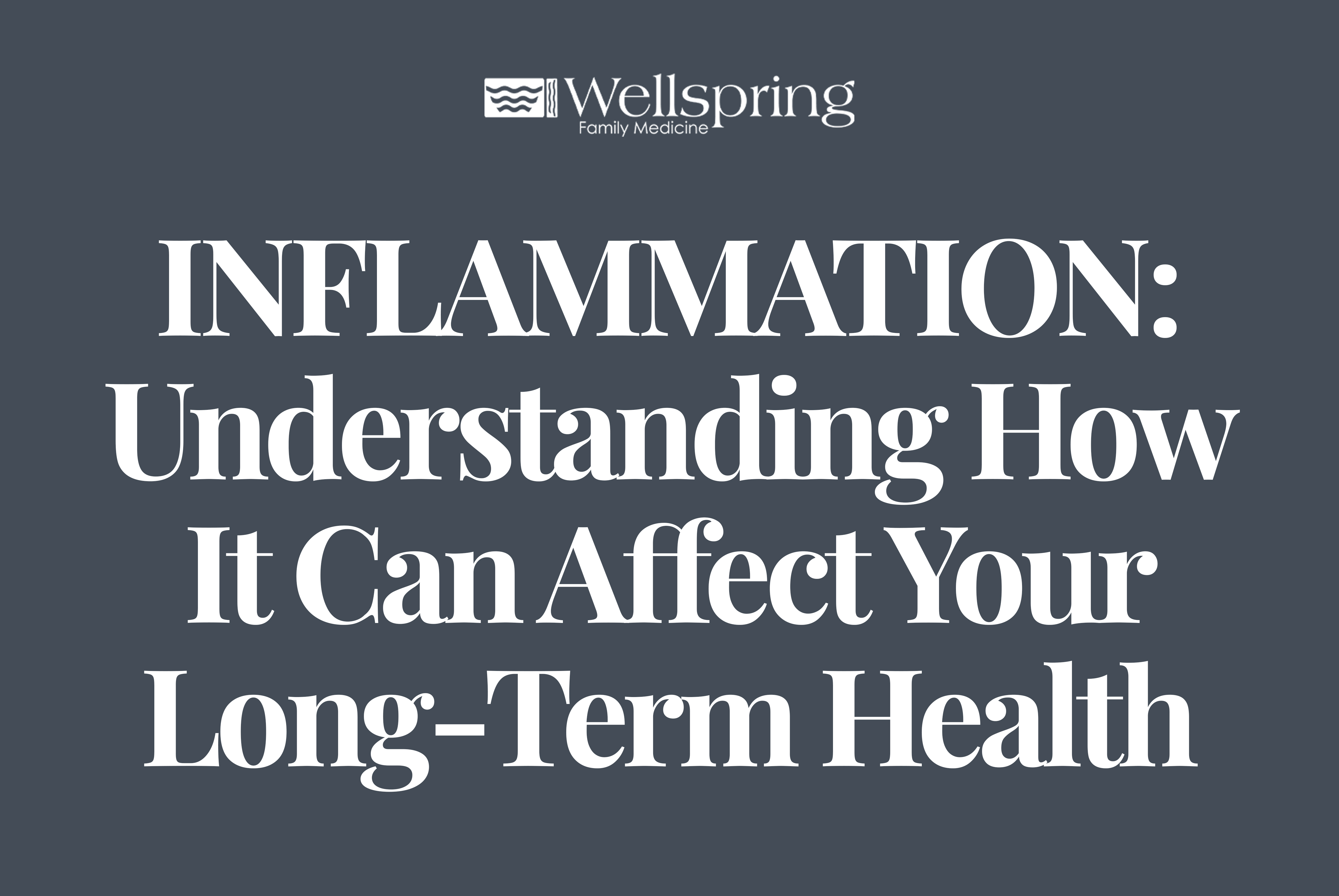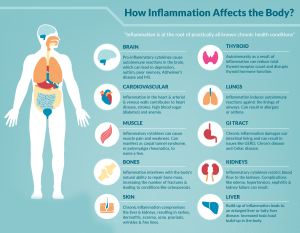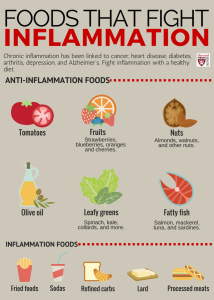
12 Jul INFLAMMATION: Understanding how it can affect your long-term health
The summer is often a time when we get outdoors to work in the yard or enjoy the summertime weather. If you have ever been working out in the yard and get a CUT on your arm or leg you know how much of a nuisance this can be. Have you ever thought of why the CUT on your body does not bleed continuously or why after several days the wound will heal without problems? The answer to this question lies in a SIMPLE answer – – INFLAMMATION. Acute inflammation is a localized protective response elicited by injury or destruction of tissues, which serves to destroy, dilute, or wall off both the injurious agent and the injured tissue. The classic signs of inflammation are heat, redness, swelling, pain, and loss of function.
In most cases the process works well without any problems. The main problem with inflammation is that it can become a chronic problem. Chronic inflammation refers to a prolonged inflammatory response that involves a progressive change in the type of cells present at the site of inflammation. It is characterized by the simultaneous destruction and repair of the tissue from the inflammatory process. It can follow an acute form of inflammation or be a prolonged low-grade form.
So, the question is why is chronic inflammation a problem in the body? Unlike the inflammation that follows a sudden infection or injury, the chronic kind produces a steady, low level of inflammation within the body that can contribute to the development of disease. It’s the result, in part, of an OVER FIRING immune system. Low levels of inflammation can get triggered in the body even when there’s no disease to fight or injury to heal, and sometimes the system can’t shut itself off. This chronic inflammation can affect every organ in your body (See Graphic Below). In fact, chronic inflammation is strongly associated with heart disease, diabetes and even dementia.
Since inflammation can lead to serious health problems it is our best interest to minimize it in our bodies. One of the most powerful tools to combat inflammation comes not from the pharmacy, but from the grocery store. “Many experimental studies have shown that components of foods or beverages may have anti-inflammatory effects,” says Dr. Frank Hu, professor of nutrition and epidemiology in the Department of Nutrition at the Harvard School of Public Health.
One way to fight inflammation is to avoid foods that increase inflammation in the body. The following foods can decrease inflammation:
- refined carbohydrates, such as white bread and pastries
- French fries and other fried foods
- soda and other sugar-sweetened beverages
- red meat (burgers, steaks) and processed meat (hot dogs, sausage)
- margarine, shortening, and lard
There are other foods that fight inflammation. Try to add these foods to your diet. Researchers from Harvard University suggest adding the following foods (see Schematic below):
Exercise is also a great way to decrease inflammation in the body. A recent study revealed that as little as 20 minutes of moderate intensity exercise can reduce inflammation in the body. Researcher, Suzi Hong, stated “Our study shows a workout session does not actually have to be intense to have anti-inflammatory effects. Twenty minutes to half an hour of moderate exercise, including fast walking, appears to be sufficient. Feeling like a workout needs to be at a peak exertion level for a long duration can intimidate those who suffer from chronic inflammatory diseases and could greatly benefit from physical activity.” For most people moderate active exercise can help with inflammation. See the list below of different types of moderate activity exercise:
Moderater Intensity:
- Walking briskly (3 miles per hour or faster, but not race-walking)
- Water aerobics
- Bicycling slower than 10 miles per hour
- Tennis (doubles)
- Ballroom dancing
- General gardening
Take these tips to help you fight the battle of excess inflammation in your body. Remember that fighting inflammation can pay big dividends in YOUR LIFE.





No Comments